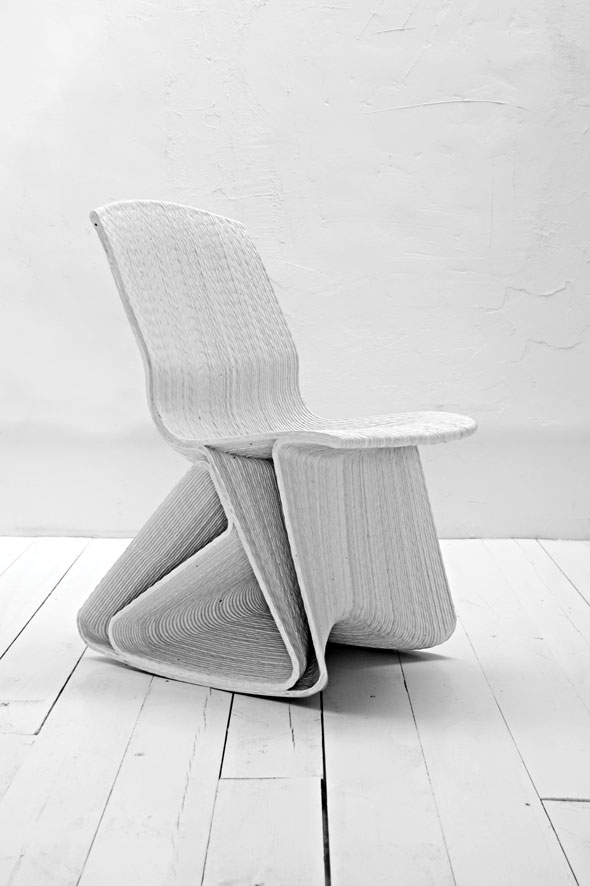
Frank Lloyd Wright. Charles and Ray Eames. The legacies of these designers and architects tower above those of their contemporaries. But exactly why is their contribution so much more lasting, their place in history so outsized? Saarinen, Kahn, Mies van der Rohe, and many others have also given us beloved designs, but theirs are not household names.
As you might expect, I have an answer to my own question: Wright and the Eames produced not just wonderful designs, but also introduced or expanded new techniques and production processes to the world. Frank Lloyd Wright was a pioneer in the use of precast concrete, glass blocks, zinc in his “leadlight” windows, and even Pyrex. The Eames spent years perfecting their methods for molding plywood to produce complex forms and strong structures. Their collaboration with the U.S. Army helped them establish a technique for commercialized production of molded plywood. They also helped commercialize production of fiberglass-reinforced plastic with their 1948 La Chaise and, later, fiberglass shell chairs. Even their focus on reducing the number of different parts—for ease of manufacturing and assembly—is a seemingly simple contribution, but it has had a lasting impact.
True process innovation is valued at a larger scale today—in the hands of companies like Apple with mass-production, CNC machining, or Nike with Flyknit technology for weaving a sneaker from a single thread. However, it can be difficult to recognize the design practitioners who live at this nexus of design and technology. My favorite contemporary designers are those who exemplify the spirit of discovery and new techniques, and who are likely to have a lasting contribution.
Processes like CNC machining, laser cutting, and 3D printing have now become so commonplace as to be part of our everyday vocabulary. In the past few years, we have seen all of these techniques migrate from aerospace and laboratory settings to use in the production of boutique products—like jewelry. As these processes mature even further, their uses expand into more-mainstream and higher-volume products. For example, New Zealander Derek Manson has introduced an electric guitar produced by 3D printing.
Dirk van der Kooij has brought 3D printing to a new level of scale and functionality. He repurposed an industrial robot arm into a large-scale “printer,” and designed a collection of furniture that is produced using a single continuous strand of 3D printed plastic. His “Endless” furniture designs beautifully reveal the process that created them. They also highlight a new technique for creating durable recycled and recyclable products. This re-thinking of process is also evident in van der Kooij’s earlier university work like the Elephant Skin stool, where molded sheets of plastic are allowed to cool in the open air instead of in a mold, achieving a textured surface that is unique to every piece. I am excited to see what van der Kooij and his growing studio produce next.
Every Joris Laarman project seems to break new ground in process, technique, or production. In 2006, his Bone Furniture introduced biomimicry and generative computer algorithms to the design world. Much like van der Kooij’s 3D printing and the Eames’ fiberglass before them, this is technology repurposed from the aerospace and automotive industries—but repurposed to create meaningful and evocative design. In the years since, similar biomimicry algorithms have been popularized by products like the customizable jewelry from Nervous System.
Many of Laarman’s other explorations also co-opt and adapt cutting-edge technologies in new directions. The HalfLife lamp repurposed a genetically modified material—a lab-generated, biological tissue that glows in the dark—into a mundane consumer product. The “Asimov Chair” used robotic arms, retrofitted with vacuum grips, to bend a single flat piece of sheet metal into a functional chair. His exhibition piece “Digital Matter” explores the Voxel—a volumetric or three- dimensional version of the pixel—and how the shrinking size of the matter that our 3D printers can manipulate may lead to distributed, local manufacturing that requires only the most fundamental material building blocks.
The furniture and consumer products we see and use every day are now largely produced by the same proven technologies—primarily the injection molding of plastics. For reasons of cost and consistency, we’ve been locked into this paradigm for decades. However, every day is bringing us closer to new mass-production technologies that will open up new possibilities for design. Joris Laarman and Dirk van der Kooij are at the leading edge, exploring these new techniques—creating not only meaningful design work, but also a legacy of process innovation that truly breaks the mold.
Ryan Wickre is a designer and mechanical engineer. He works at frog Design in San Francisco.
Text by Ryan Wickre
Rocking Chair 3.1 by Dirk van der Kooi

